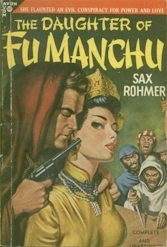 The Book of the Week is The Thirty-First of February, a collection of short fiction by Nelson S. Bond. This is to honor Mr. Bond, who passed away recently at the age of 97.
The Book of the Week is The Thirty-First of February, a collection of short fiction by Nelson S. Bond. This is to honor Mr. Bond, who passed away recently at the age of 97.Nelson S. Bond was a prolific pulp writer, penning well over 200 stories for the pulp magazines. He is best remembered for his light-hearted science fiction and fantasy for the SF pulps and for Blue Book and Weird Tales, but he also wrote many stories for the sports and mystery pulps. Most of his work was first published between the late 1930's and the mid-1950's, and he only occasionally wrote fiction after that, including a story for Asimov's Science Fiction in 1999. He often wrote scripts for radio and television, and in 1946 wrote arguably the first teleplay ever aired on a TV network (a network consisting of New York, Boston, and Washington). In 1998 Bond was named Author Emeritus by the Science Fiction and Fantasy Writers of America.
After retiring from writing full-time, Nelson Bond went into business as a rare book dealer, so I thought it would be fitting to honor him with the hardcover first edition of one of his own books. On the other hand, we shouldn't neglect his background in the pulps. Next week's Magazine of the Week will be a pulp magazine with a cover story by Nelson S. Bond and a cover image that may have inspired the creators of the film Planet of the Apes.





